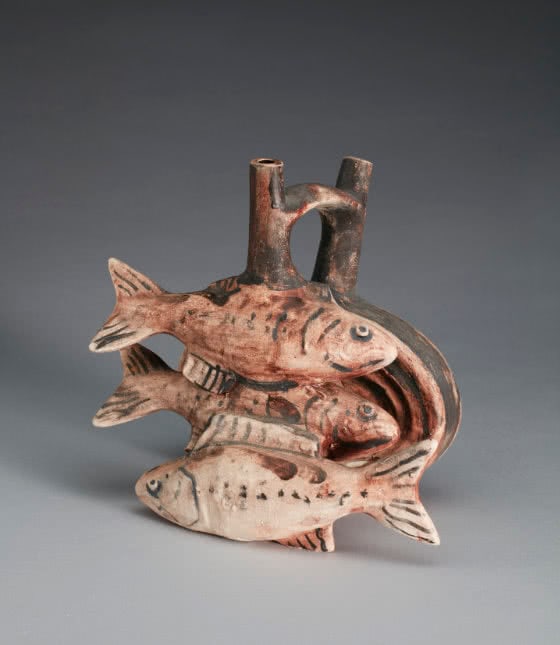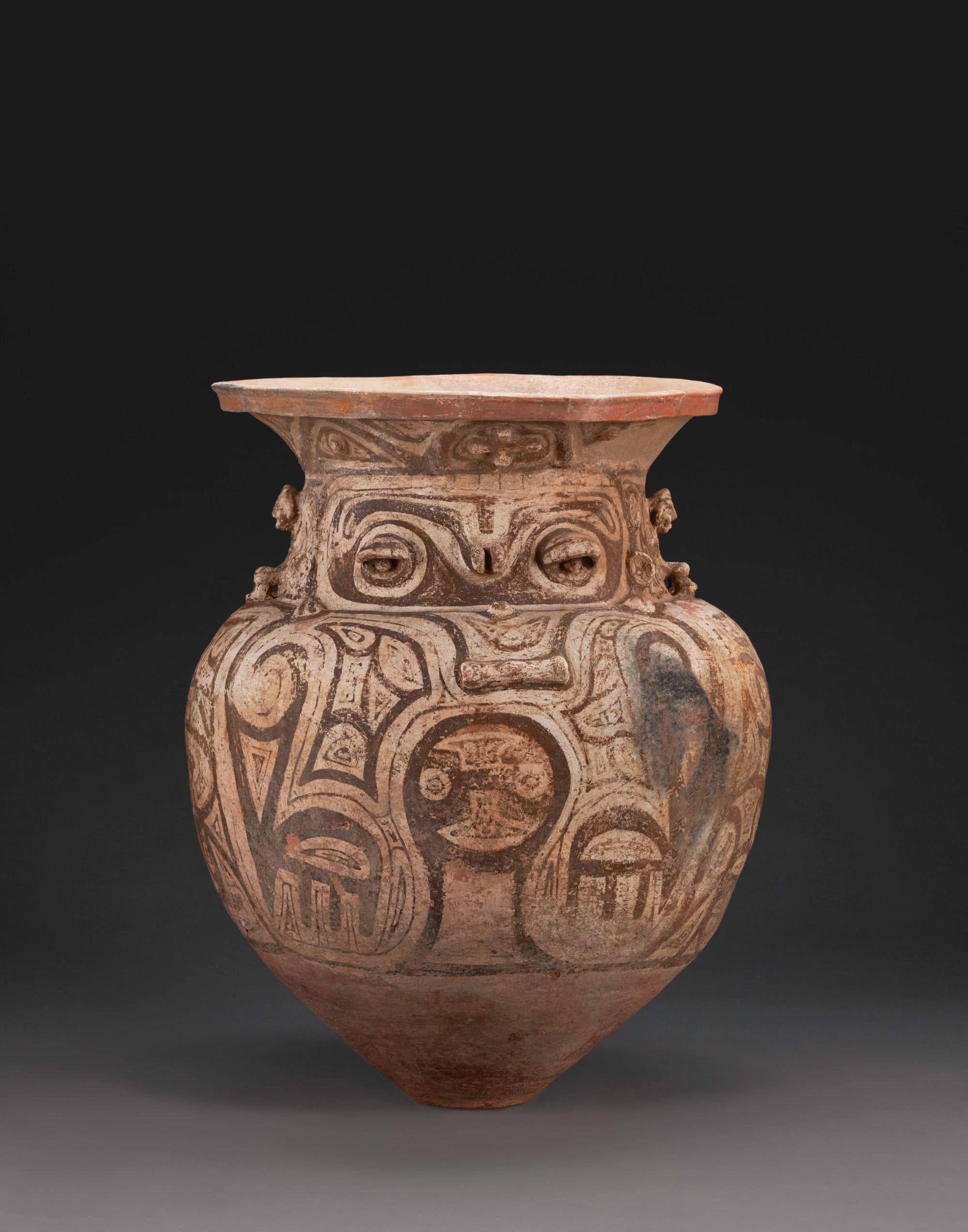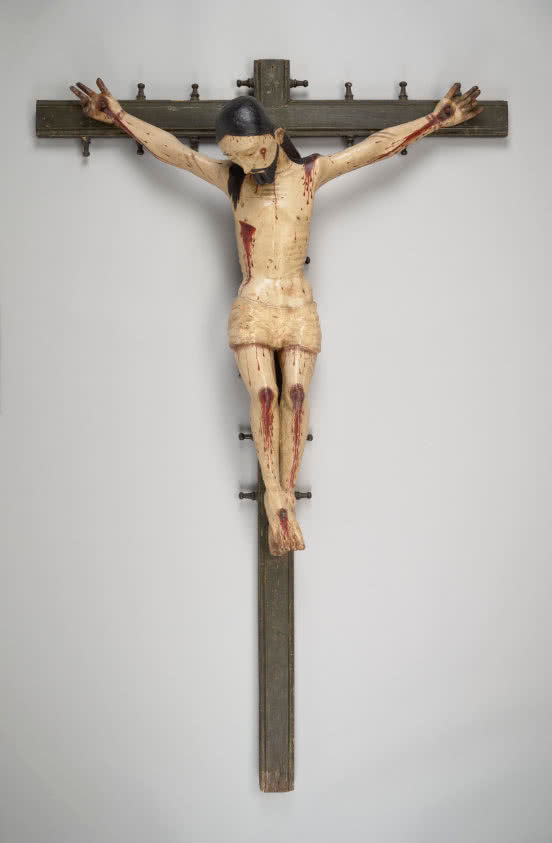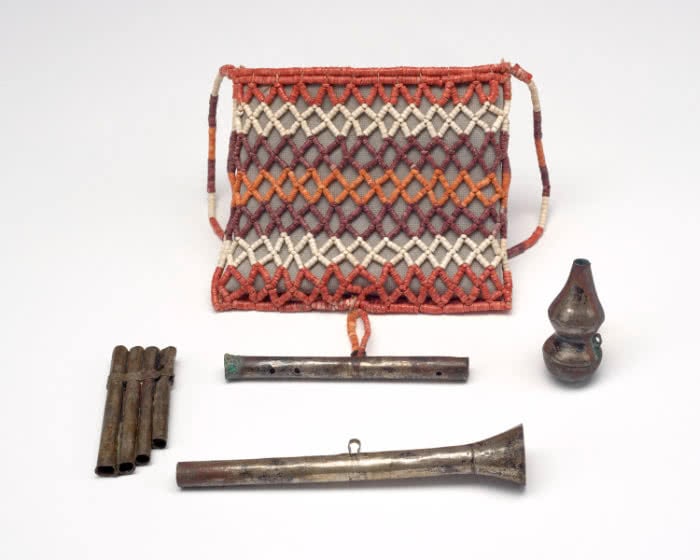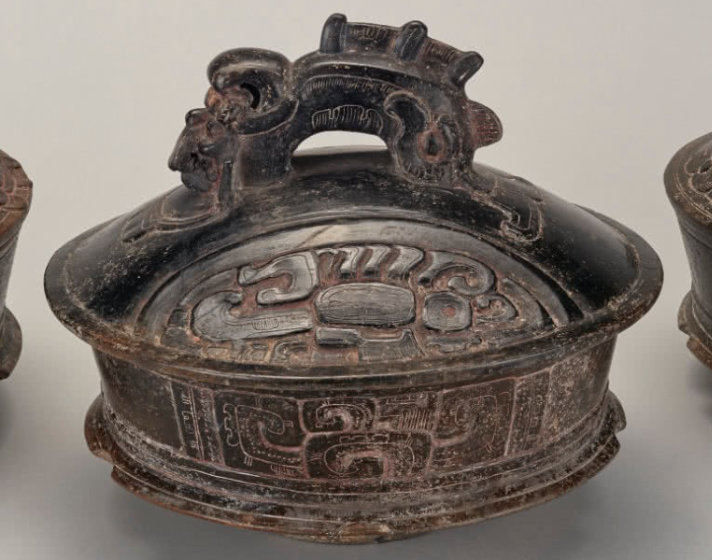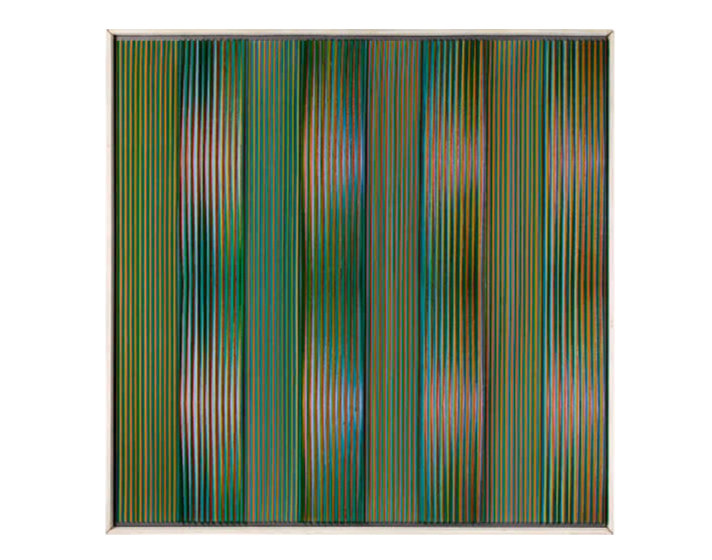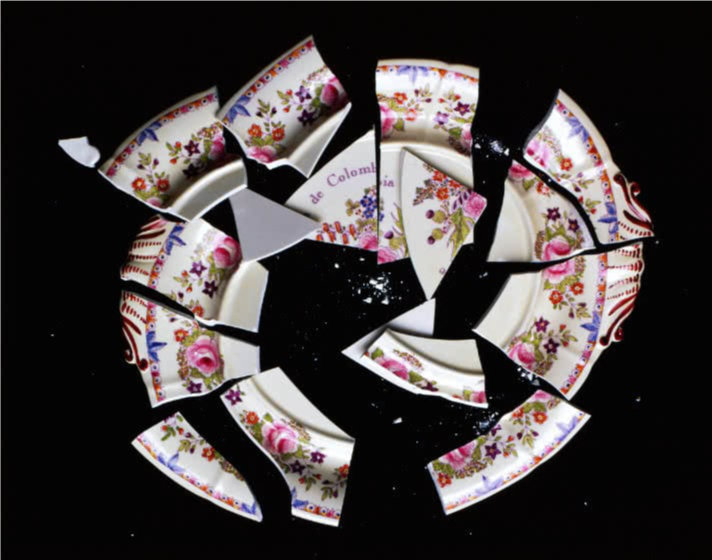It is difficult to define what makes the Americas the Americas. A landmass incorporating North, South, and Central America as well as the Caribbean islands, the region encompasses hundreds of languages, cultures, and beliefs. Traditionally, the story of the Americas has been told as two separate narratives, before and after the arrival of Europeans. ReVisión: Art in the Americas proposes a single interwoven story that collapses time and distance to reveal how the past continues to exert an enduring influence on artists today. In these galleries, history, legend, memory, and the present intertwine.
To be from the Americas is to be descended from both the original inhabitants of this land and those who sought their fortunes in the richness of this land from 1492 to today. It is this shared history with its inherent contradictions—to be both conquered and conqueror—that unites us. The works in the exhibition span 2,500 years of artistic production. We invite you to explore the complex stories of the Americas and the cultural legacies that continue to shape our lives today.
Artwork Description:
Large textile map of North, South, and Central America. The map is devoid of geographic indicators and instead features the names of the original inhabitants of the American continent dating back 11,000 years. Names are in black embroidery on off-white cotton.
Carla Fernández and Pedro Reyes
Mexican, born 1973; Mexican, born 1972
Hand embroidered by Otomí artisan, Endy López
Pueblos originarios del continente [Original peoples of the continent]
2020 CE
Embroidery on raw cotton
Purchased with generous funds from Alianza de las Artes Americanas and anonymous donor, 2020.196. © and courtesy of Carla Fernández and Pedro Reyes
Connections to the Land
Spanning thousands of miles, the Americas contain a multitude of landscapes: fertile volcanic valleys, arid coastal deserts, and dense rainforests. For centuries, peoples throughout the region shared the beliefs that they came from the land, the land is alive, and the land will sustain them if they pay it tribute. Each plant, tree, animal, rock, and mountain contained within it a life force derived from the spark of creation. The works in this gallery illustrate ongoing relationships between communities and the essentials of nature that sustain them: water, corn, and mountains.
Juan Javier Salazar
Peruvian, 1955–2016, worked in Lima
La Portola
2016
Glazed ceramic
Gift of Natalia Majluf in honor of Jorge Rivas, 2016.302. © Estate of Juan Javier Salazar
Water That Sustains
Attributed to Cristóbal de Villalpando
Mexican, about 1649–1714
The Virgin of Valvanera
About 1710
Oil paint on canvas
Gift of the Collection of Frederick and Jan Mayer, 2008.832
The rhythm of life revolves around the arrival of rain, an essential ingredient for a bountiful harvest. While rain brings life, it can also bring great harm through storms and flooding. The importance of water to daily life is reflected in the religious beliefs of communities throughout the Americas. In Central Mexico, several deities were associated with water. Cocijo, the Zapotec god of rain, embodied the potentially destructive forces of storms. Chalchiuhtlicue, Aztec goddess of lakes and streams, also ruled over childbirth, due to the watery nature of the womb.
Along the arid Peruvian coast, rainwater flowing down the mountains brought the desert into bloom, while a rich ecosystem of marine life nourished coastal communities. When the Spanish came to the Americas, they brought their own beliefs associated with life-giving water, as can be seen in the painting of the Virgin of Valvanera, with its flowing stream.
Artwork Description:
Nine framed ink prints arranged in a three-by-three square grid.
Sheroanawë Hakihiiwë
Venezuelan (Yanomami), born 1971, lives and works in Pori Pori
Top row from left:
tipikiwe; kashihiwe; kohorarawe
Middle row from left:
uwauwami; hisiriki; tipikirimi
Bottom row from left:
pariki husepari; kashausi; shaririwe II
2019
Oil-based ink on Hanji mulberry paper
© Sheroanawë Hakihiiwë/Galería ABRA
Sheroanawë Hakihiiwë lives in a remote Yanomami indigenous community in the Venezuelan Amazon near the border with Brazil. In this series of monotype prints, he creates a group of abstract designs that combine elements of Yanomami visual culture (such as patterns on baskets and body art) with his own designs that represent animals that live along the Orinoco River, the source of life for his community.
Unknown artist
Marajó Island, Brazil
Jar
400–1500
Ceramic with colored slip
Gift of the Collection of Frederick and Jan Mayer, 2006.14A-B
Located at the delta of the Amazon River, Marajó Island is subject to seasonal flooding and heavy rainfall that enriches the land. For a thousand years, it supported a large community that left behind elaborate ceramics. Undulating designs evoke a serpent, a key animal who, according to Amazonian mythology, brought people to the territory. A detail on the belly of this monumental vessel, made to hold the bones of the deceased, suggests a feminine identity and power.
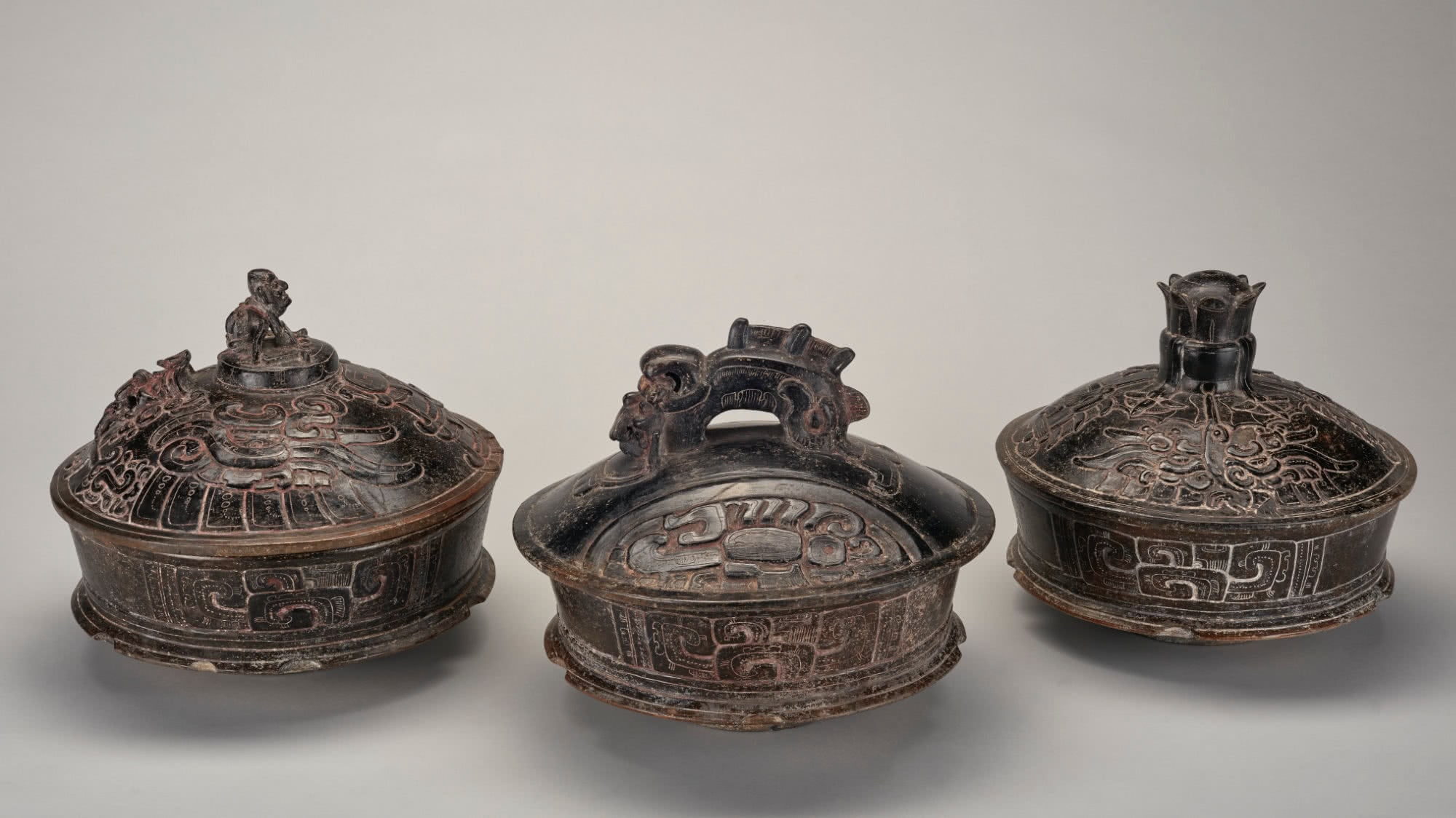
Purchased in honor of Jan and Frederick Mayer with funds from 2001 Collectors' Choice, 1998.33–35A-B
Unknown artists
Maya culture, Mexico or Guatemala
Lidded Vessel with Deity Riding on Mythical Bird; Lidded Vessel with Fish and Reptilian Imagery; Lidded Vessel with Waterlilies and Hummingbirds
250–450
Reduction-fired ceramic
Purchased in honor of Jan and Frederick Mayer with funds from 2001 Collectors' Choice, 1998.33–35A-B
Together these vessels map the three realms of the Maya cosmos: sky, earth, and underworld. The waterlily imagery represents the dark, still waters of the underworld, while the vessel featuring the fish handle and reptilian forms stands for the earth, often described as the back of an alligator. The third vessel, associated with the heavens, depicts the Principal Bird Deity, bearing on his back a hunchbacked, toothless man who is Itzamnaaj, the creator deity.
Artwork Description:
Forest green and sky-blue strips of vinyl woven together resemble the landscape of the Amazon. The piece hangs from the ceiling and undulates to form two peaks before snaking out onto the ground.
Clarissa Tossin
Brazilian, born 1973, works in Los Angeles
Encontro das Águas [Meeting of Waters]
2016–18
Archival inkjet on vinyl
Terracotta, fish net, wood, thread, paper, and baskets woven out of Amazon.com boxes
Courtesy of the artist, Luisa Strina Gallery, São Paulo, and Commonwealth and Council, Los Angeles
Clarissa Tossin wove her 40-foot-long “river” using vinyl printed with satellite imagery of the differently colored Amazon and Negro rivers as they converge near the port of Manaus. In the corner of the gallery, terracotta models of iPhones, laptops, and printers represent products flowing from Manaus, transforming the local economy and ultimately reshaping the landscape. Fishing nets and baskets woven from used Amazon.com boxes combine traditional forms with modern consumerism, calling attention to a disappearing heritage.
Corn That Nurtures
Unknown artist
Guanajuato, Mexico
Crucifix
About 1700
Caña de maíz technique (wood, corn paste, gesso, fabric, and oil paint)
Museum exchange, 1968.192
The making, the modeling of our first mother-father with yellow corn, white corn alone for the flesh, food alone for the human legs and arms.
An essential staple in the ancient Americas, corn was integral to origin stories throughout the region. For many communities, corn, along with water and blood, was a vital substance: the flesh of humans as well as necessary sustenance. The ancient Maya described the earth’s surface at the moment of creation as a four-cornered corn field from which life and land sprouted. The Aztecs believed that the spark of life came from the blood sacrifice of the gods sprinkled on maize dough, a belief that would be incorporated later into Catholic religion, as the corn-paste crucified Christ on display here illustrates.
The preciousness of corn can be seen in the materials and imagery used to represent it. The Olmec carved green jadeite, the rarest material available, into abstracted representations of corn cobs. The Inka represented this essential staple in silver.
Sandra Monterroso
Guatemalan, born 1974
Tus tortillas mi amor (Lix Cua Rahro)
2004
Video
Ed. 3/6, + 2P/A
12 min., 30 sec.
Still © and courtesy of Sandra Monterroso
In this performance, whose title translates to “Your tortillas, my love,” Sandra Monterroso chews corn kernels to break down their hard exterior and then mixes the mash with water to make the masa or dough for tortillas. Like the Maya gods who created humans from corn, Monterroso puts a part of herself into the corn dough. As she works, she recites a poem in Q’eqchi’, a Maya language also used for the work’s second title, Lix Cua Rahro.
Sacred Landmarks: Mountains and Volcanoes
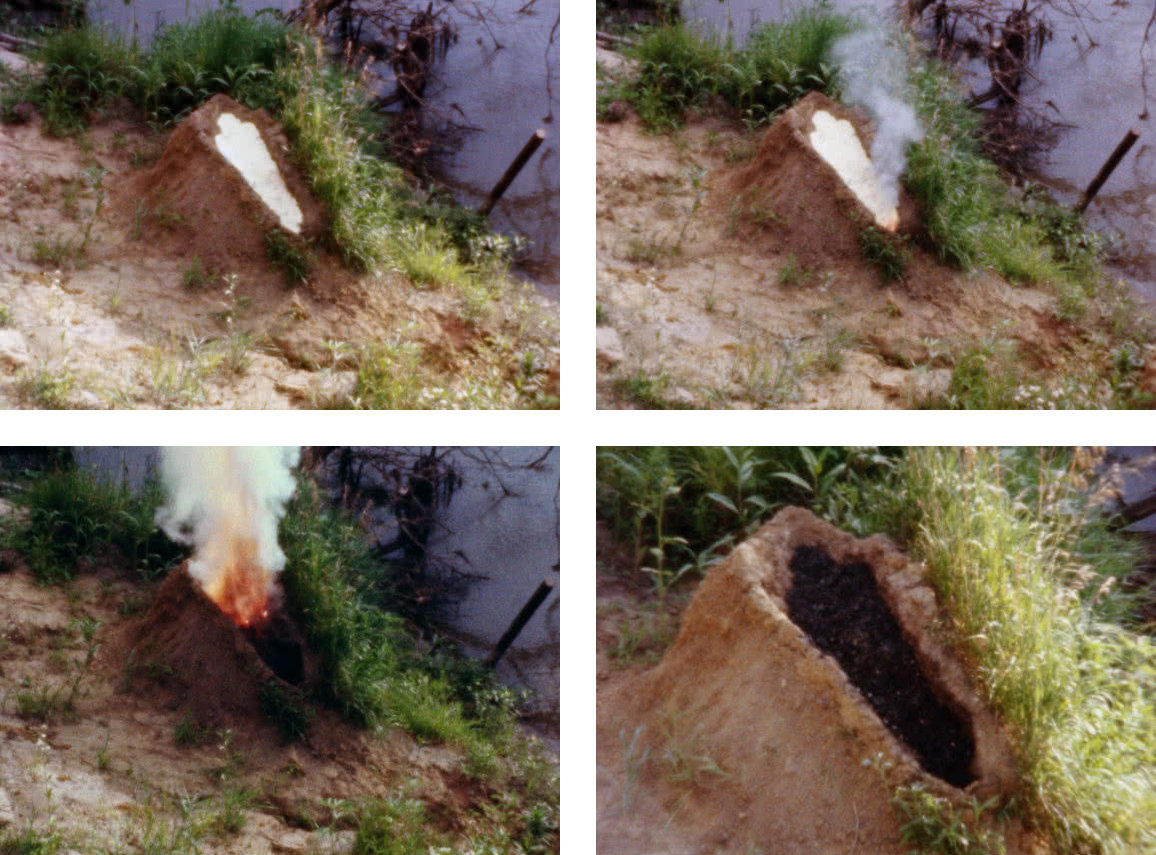
Purchased with funds from DAM Contemporaries, the Ralph L. and Florence R. Burgess Trust, and Lucile and Donald Graham by exchange, 2017.71. © The Estate of Ana Mendieta Collection, LLC, courtesy Galerie Lelong & Co
Ana Mendieta
Cuban, 1948–1985, worked in Iowa and New York
Volcán [Volcano]
1979
Super 8 mm color film transferred to high-definition digital media, silent single-channel video, ed. 1 of 8 with three artist proofs
3 min., 56 sec.
Purchased with funds from DAM Contemporaries, the Ralph L. and Florence R. Burgess Trust, and Lucile and Donald Graham by exchange, 2017.71. © The Estate of Ana Mendieta Collection, LLC, courtesy Galerie Lelong & Co
Mountains and volcanoes held special spiritual significance for many communities in the ancient Americas as places of origin. After the Spanish brought Christianity to the Americas, sites that were sacred to Native populations often acquired new meaning. Tepeyac hill in Mexico, a place of worship for the Aztecs, was converted to an important Christian site during the Spanish empire. It is where, according to Catholic tradition, Juan Diego met the Virgin of Guadalupe and miraculously received her image on his cloak.
Cuban artist Ana Mendieta’s video explores the sacred nature of mountains and volcanoes. The flames in Volcán (Volcano) consume the contents of the female-shaped opening in the earth, a reference to similar Afro-Cuban religious rites that use fire to honor goddesses.
Unknown Chancay artist
Peru
Net Bag with Miniature Instruments
1000–1500
Spondylus shell beads, cotton thread, and silver
Gift of Frederick and Jan Mayer, 1969.296.1-6
ReVisión: Art in the Americas is organized by the Denver Art Museum. It is presented with generous support from the National Endowment for the Arts, Carl & Marilynn Thoma Art Foundation, Kathie and Keith Finger, donors to the Annual Fund Leadership Campaign, and the residents who support the Scientific and Cultural Facilities District (SCFD). Promotional support is provided by 5280 Magazine and CBS4.
